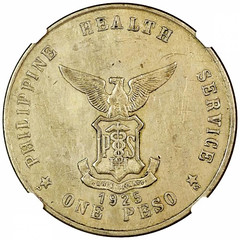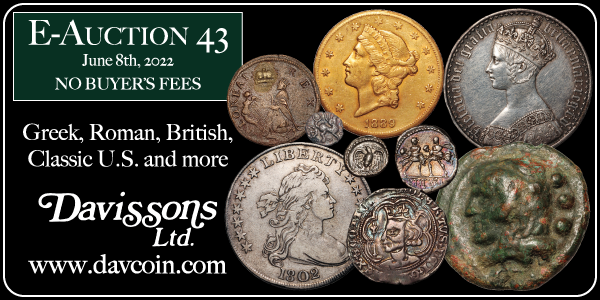
On the American Numismatic Association website the Coleccionistas de Monedas's Blog has a nice article about coins and tokens related to leprosy. Check it out - here's an excerpt. See the complete article online.
-Editor
 Leprosy is perhaps the most feared disease in history, reported in millenary texts and universally popularized by its numerous mentions in the Bible. However, although this bacillus is not transmitted by contact, but through the airways when breathing, coughing or talking, different countries minted coins for prophylactic purposes since the early twentieth century for the exclusive use of leprosaria located in their territory.
Leprosy is perhaps the most feared disease in history, reported in millenary texts and universally popularized by its numerous mentions in the Bible. However, although this bacillus is not transmitted by contact, but through the airways when breathing, coughing or talking, different countries minted coins for prophylactic purposes since the early twentieth century for the exclusive use of leprosaria located in their territory.
This disease led to millennia of segregation and isolation measures for those who had the misfortune to suffer from it. In this article we will provide all the information on this phenomenon and the best known coins that were minted for this purpose.
Colombia, a pioneer in coins for leper houses
The oldest known official coins belong to the Colombian leprosarium of Agua de Dios, Caño de Loro and Contratación. Bogota minted four series: 1901, 1907, 1921 (copper) and 1928 (nickel). The denominations ranged from centavo to 10 pesos. The design included a cross with the word "lazareto", the value, year, the legend "República de Colombia" (Republic of Colombia) and, in some cases, the national coat of arms and place of manufacture.
Venezuelan Coins
Venezuelan coins appeared in 1913 in the name of the Maracaibo lazaretto, located on the island of Providencia, in the western part of the country, while others were issued in 1916. Made of brass, they included on the obverse side the name of the leprosarium and the year, while the reverse side showed the value, from 5 centavos to 20 bolivars.
In 1936 a new series was minted for the Cabo Blanco leprosarium in the center of the country. The issues would conclude in 1939, when Maracaibo received its last pieces. The variations between coins would be typographic, in their typeface (denticles vs. dots), edge (smooth vs. striated) and presentation of the denominations (fractions vs. decimals).
The Philippines and the Culion Island Lazaretto
The United States occupied the Philippines between 1898 and 1946, creating the leprocomium on Culion Island, and minting between 1913 and 1930 coins ranging in value from ½ centavo to peso. The first series were struck in aluminum (1913, 1920) and cupro-nickel (1922); they showed on the obverse a caduceus, the legend "Bureau of Health", later "Philippine Health Service", and the year; the reverse displayed the value accompanied by the inscriptions "Culion Leper Colony" and "Philippine Islands".
To read the complete article, see:
Coleccionistas de Monedas's Blog
(https://www.money.org/collector/user_74883/blog/leprosy-coins-an-almost-unknown-numismatic-phenomenon)
Wayne Homren, Editor
The Numismatic Bibliomania Society is a non-profit organization
promoting numismatic literature. See our web site at coinbooks.org.
To submit items for publication in The E-Sylum, write to the Editor
at this address: whomren@gmail.com
To subscribe go to: https://my.binhost.com/lists/listinfo/esylum
Copyright © 1998 - 2024 The Numismatic Bibliomania Society (NBS)
All Rights Reserved.
NBS Home Page
Contact the NBS webmaster
|



